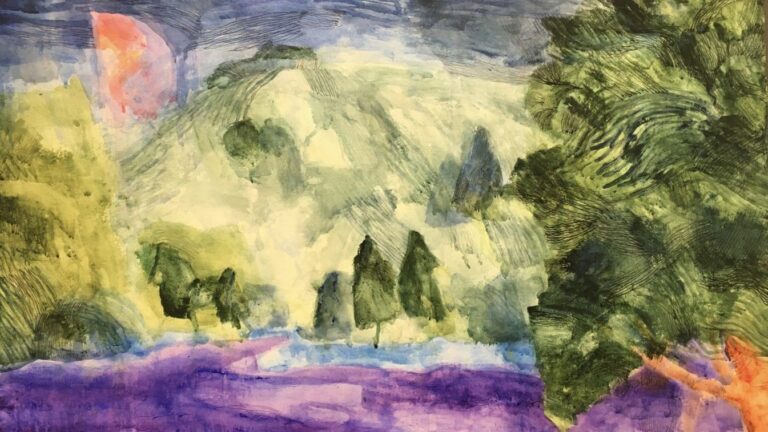The colour palette in Wales at the moment is one of muted browns, dour greys and mucky khaki. So what a perfect season to come across the work of Eleri Mills.
Mills is one of the most well-regarded of Welsh artists. Her work has travelled across the globe. I happened upon her work in a small mid Wales gallery (Oriel Davies, Newtown, Powys) and was entranced.
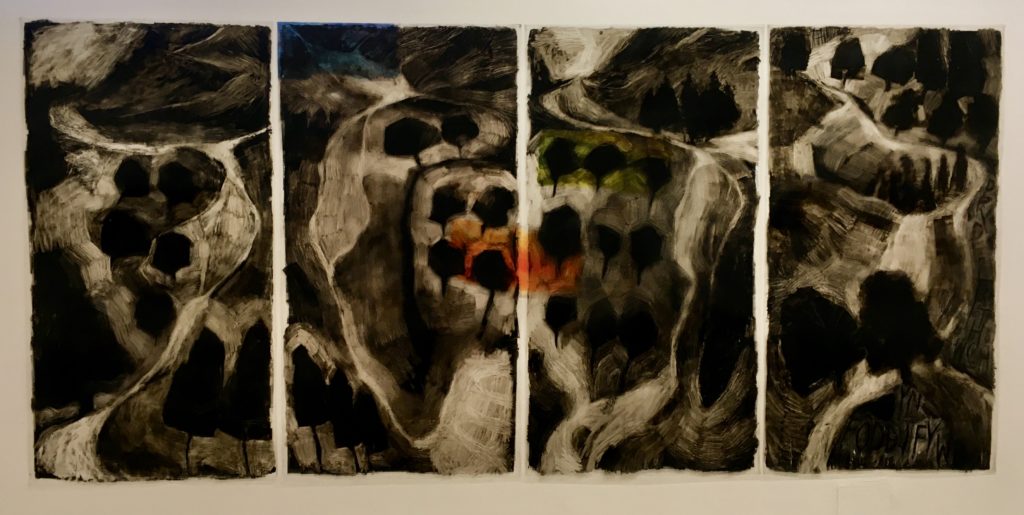
Daughter of farming family, Mills’ work is utterly grounded in the natural world. But it is the natural world through the eye of a colour-genius. The fields in her canvases are ochre, burnt orange, ultramarine and violet. This is recognisably working land but it is also dreaming land. It is light and weather on landscape, it is history and ancestry. It encompasses the myth and spirit we see in sacred Aboriginal Dreamtime works.

Mills attributes her colour inspiration to the Welsh painter James Dickson Innes who, more than a hundred years before, captured the mountain Arenig Fawr in what Mills describes as “almost psychedelic colours.”
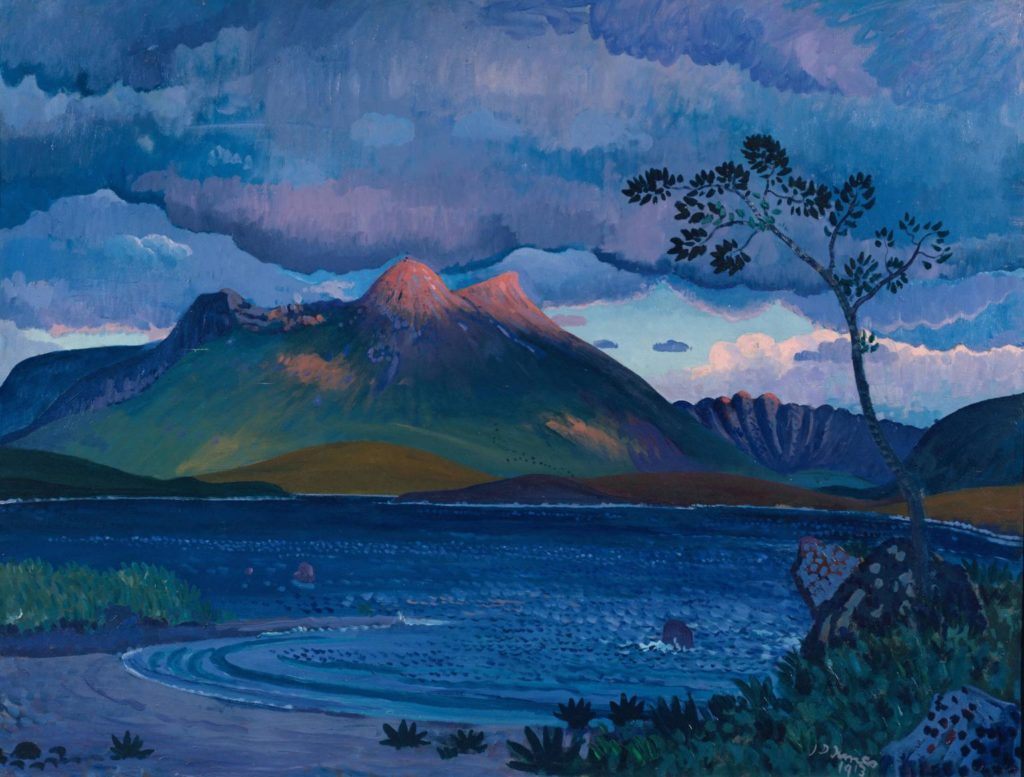
Drawing from a wide range of techniques, Mills paints, prints, draws and stitches. Her use of multi-layered mixed media is dazzling – she uses paper, canvas, paint, gesso, acetate, fabric and thread. Often considered a sedentary ‘women’s art’ embroidery has allowed Mills to stretch herself – quite literally. She works with a very long thread and stitches standing up, walking back and fore from the canvas, assessing the work in progress. She says “it has to have the right composition, the right balance and rhythm and I can only assess these things at a distance.”
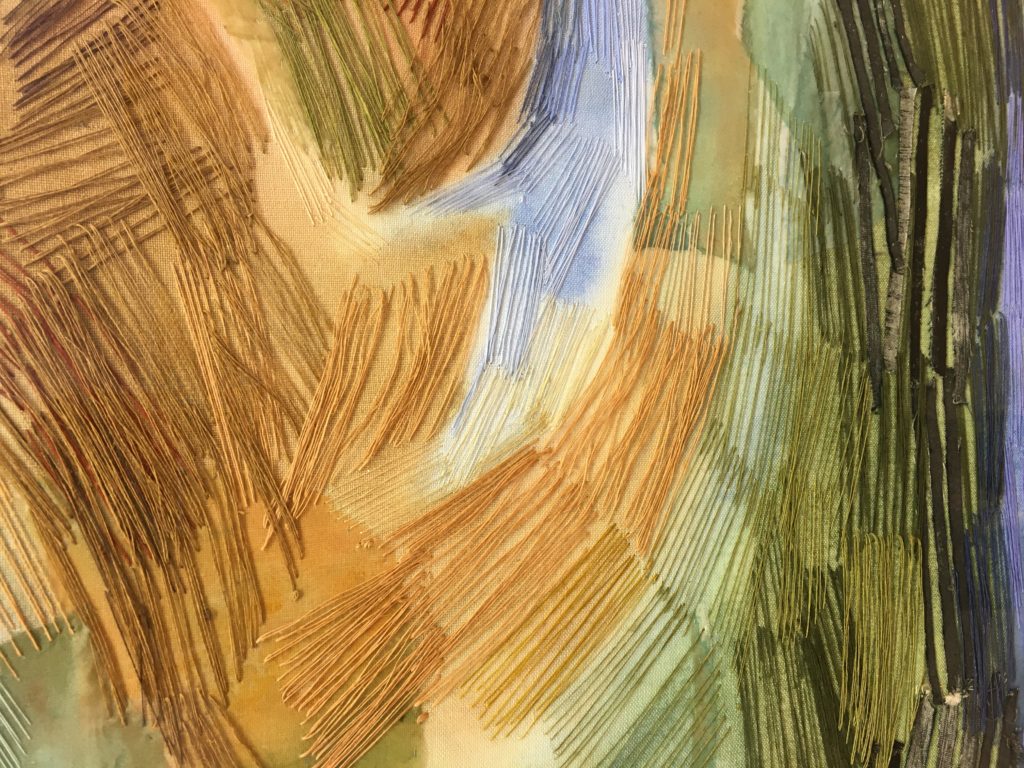
Infact Mills has said that she often works to music, and thinks of her artwork in terms of tempo and rhythm. Adding paint and thread to a giant canvas is clearly a very physical act. She has hinted that she would like to work with dancers or choreographers at some point in the future.
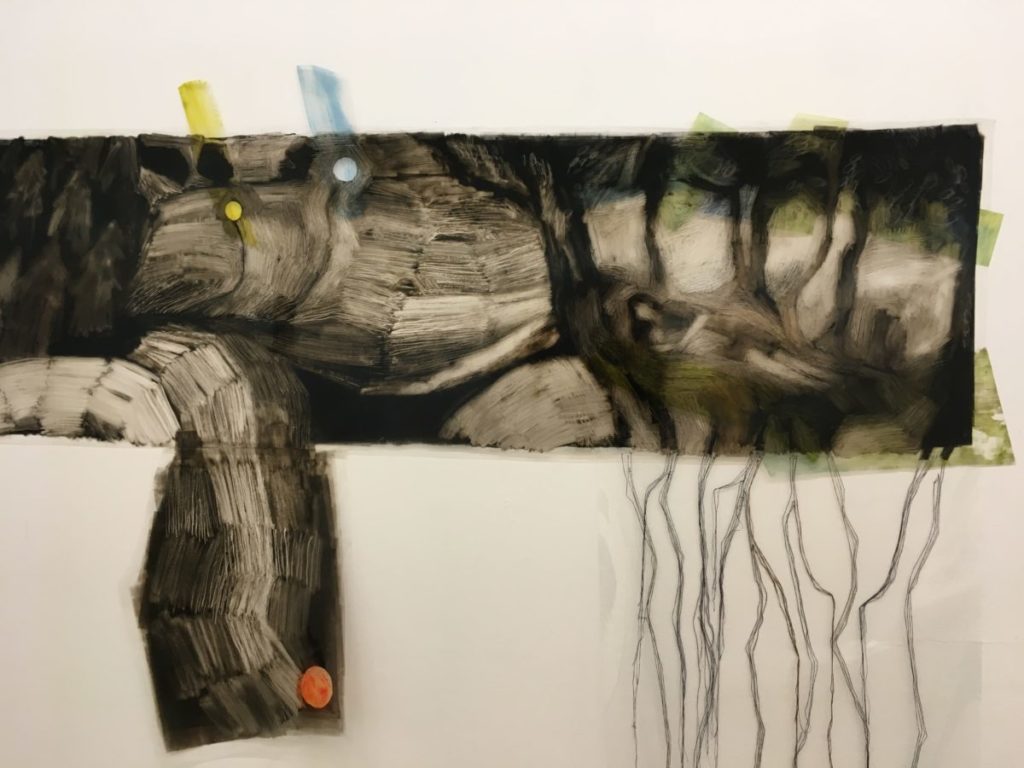
Mills studied art and design at Manchester Polytechnic and is an elected member of the Royal Cambrian Academy. But the lure of her home landscape was strong and she returned home to her Welsh-speaking community, although she travels widely to exhibit, to learn and to teach.
She produced a series of works Yn y dyffryn / In The Valley for the National Eisteddfod (a huge national festival of Welsh arts, music, poetry and performance, with ancient roots). These were large scale ink drawings, about which she said:
While my work has always been influenced by the landscape and bardic tradition of Wales, these challenge me in terms of scale, technique, emotional content and tempo. In these works I am representing a layered landscape, and a sense of belonging to a place. There are risks involved when working with ink with no room for error. It is an intensely physical and gestural process. A form of choreography and personal mapmaking which celebrates an old familiar landscape.
Eleri Mills
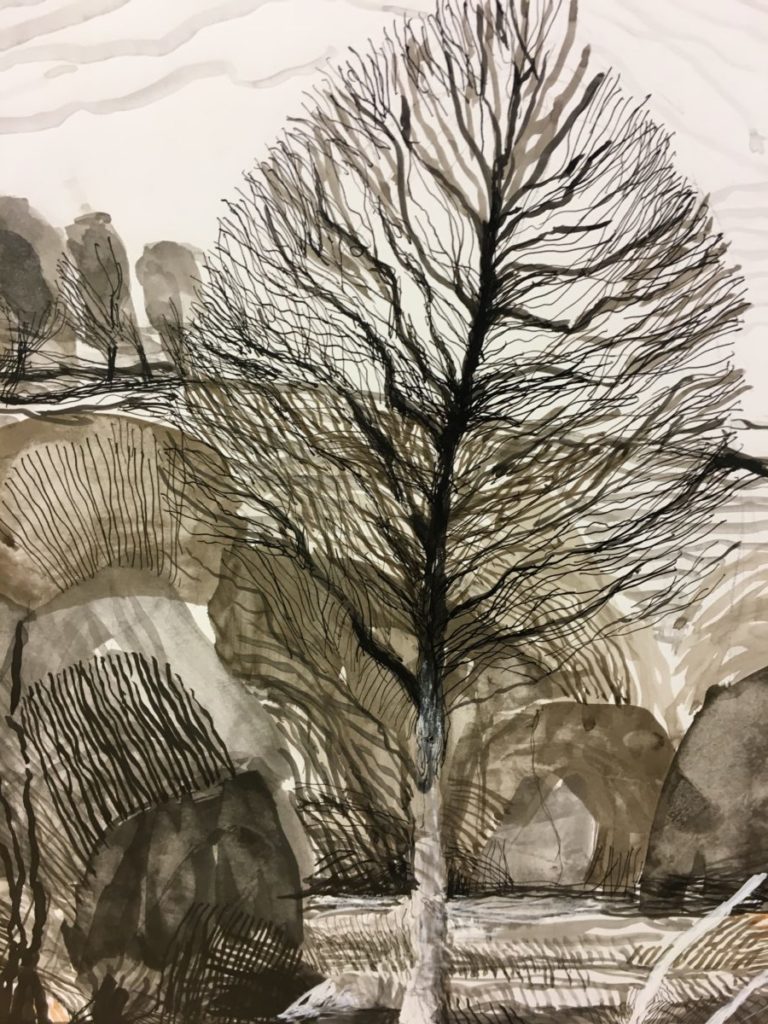
If you ever get the chance to visit Wales then get away from the cities and towns and take a look at the landscapes that have inspired artists through the ages.
There is a word in Welsh: hiraeth, which has no direct translation, but means a sense of immense longing, for landscape, family, home. Mills has said about her home landscape:
“The land has always been there in my mind. The passing on of the land from one generation to the next represents continuity and instils a deep sense of belonging.”
Eleri Mills
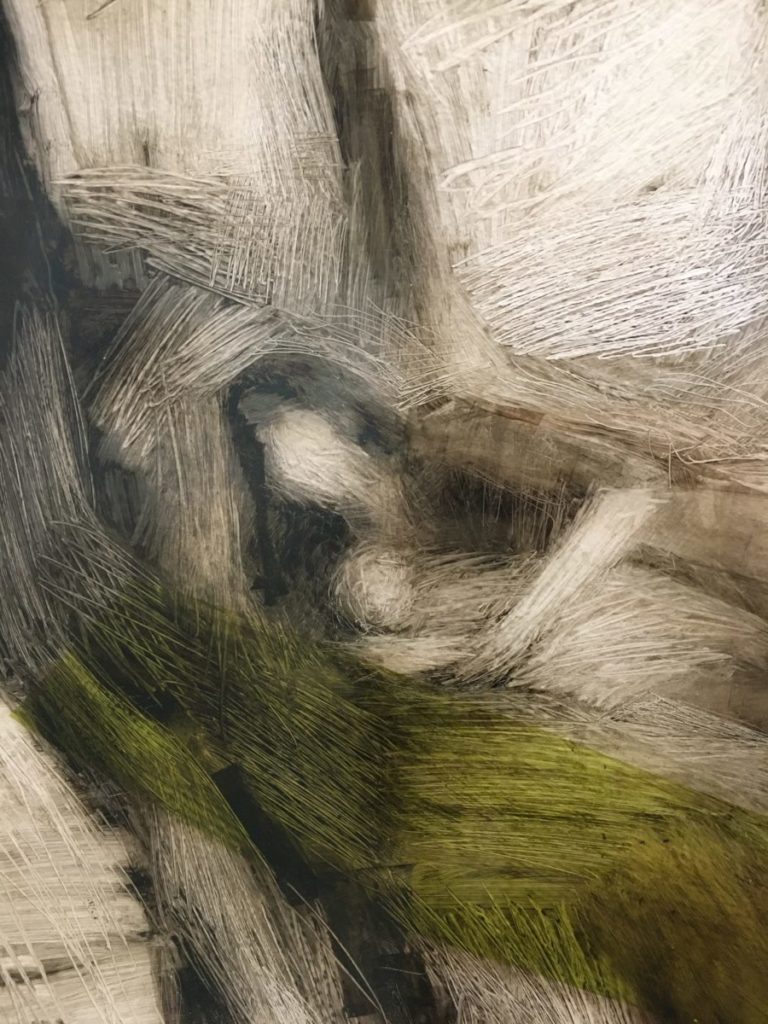
There are families here that have worked the land for generations. Imagine being able to read the landscape as easily as the contours of your own hand. To know every hillock, ditch and boundary, to read the rain, the wind and the stars. The terrain in Mills’ paintings pulses with life, just as your own arteries pulse. Dive into her paintings, and discover for yourself.
You might want to read:
